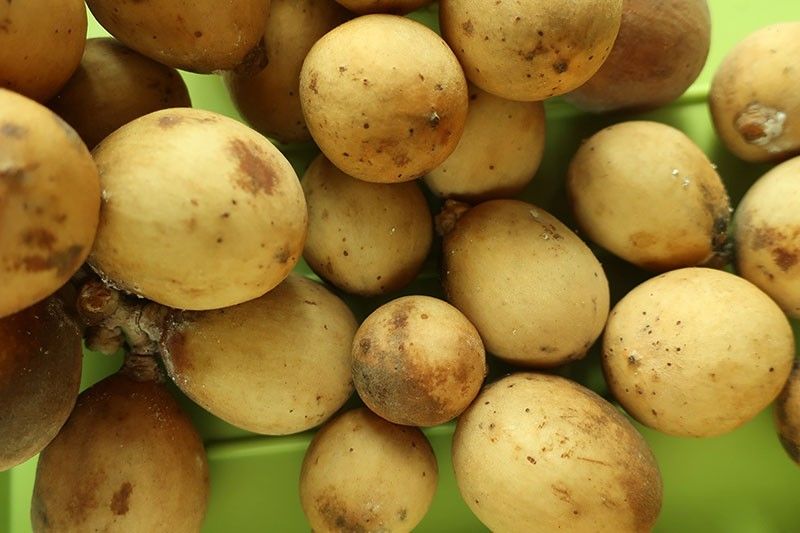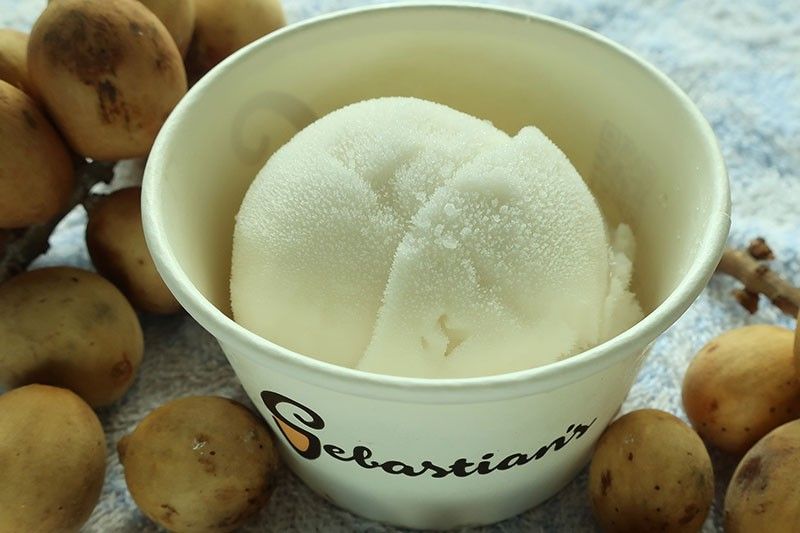Well-rounded: Medicinal properties, culinary applications of Lanzones

MANILA, Philippines — Lanzones is in season twice a year. It is abundant from March to April and then again in October.
Lanzones (Lansium parasiticum) also answers to the names langsat or longkong (English), duku (Indonesian) and dokong (Terengganu Malay).
It is native to Southeast Asia, growing in countries like Thailand, Vietnam, Cambodia, Malaysia, India and the Philippines. In the Philippines, it is grown in Luzon, Camiguin, as well as Mindanao, including Davao del Norte, Sulu and Zamboanga del Norte.
The fruit can be elliptical, ovoid, or round. Growing in clusters, each fruit has a thin, yellowish skin. When peeled, it reveals translucent lobes, some with a small seed that is bitter. The juicy flesh tastes oh-so-sweet and contains sucrose, fructose and glucose.

Cultivated mainly for its fruit, which is awesome when eaten raw, Lanzones can be made into syrup or jam. It can also be used as a souring agent for Sinigang. A quick check with Google reveals that it is best with pork, specifically Sinigang na Baboy sa Lanzones.
Claiming to be the Lanzones Capital of the Philippines, Camiguin makes Dried Lanzones, Lanzones Wine, Lanzones Tart and incorporates the fruit into its Masa Podrida heirloom cookies. For pastry chefs, lanzones makes good cakes, tarts and desserts. Ilustrado Restaurant in Intramuros, Manila, once had an unforgettable Lanzones Salad treat.
Ice cream genius Ian Carandang made batches of Lanzones Sorbet and the refreshing flavor was available for a limited period at the Sebastian’s Ice Cream outlet in The Podium.
Eating Lanzones becomes as even more enjoyable experience when you know that it comes with many health benefits. It is rich in Vitamins A, B1 (thiamine) and B2 (riboflavin).
Apart from culinary applications and health benefits, Lanzones also has medicinal properties. Parts of the Lanzones plant are used to make traditional medicine. The seeds, for instance, can be pounded and diluted in water to make deworming and ulcer medication. The bark may be used to treat both scorpion stings, malaria and dysentery. The skin of the fruit itself can be used to treat diarrhea, and if you dry the skin, you can burn it like a normal mosquito repellant.
RELATED: Rambutan: Trivia about Southeast Asia's exotic fruit




















